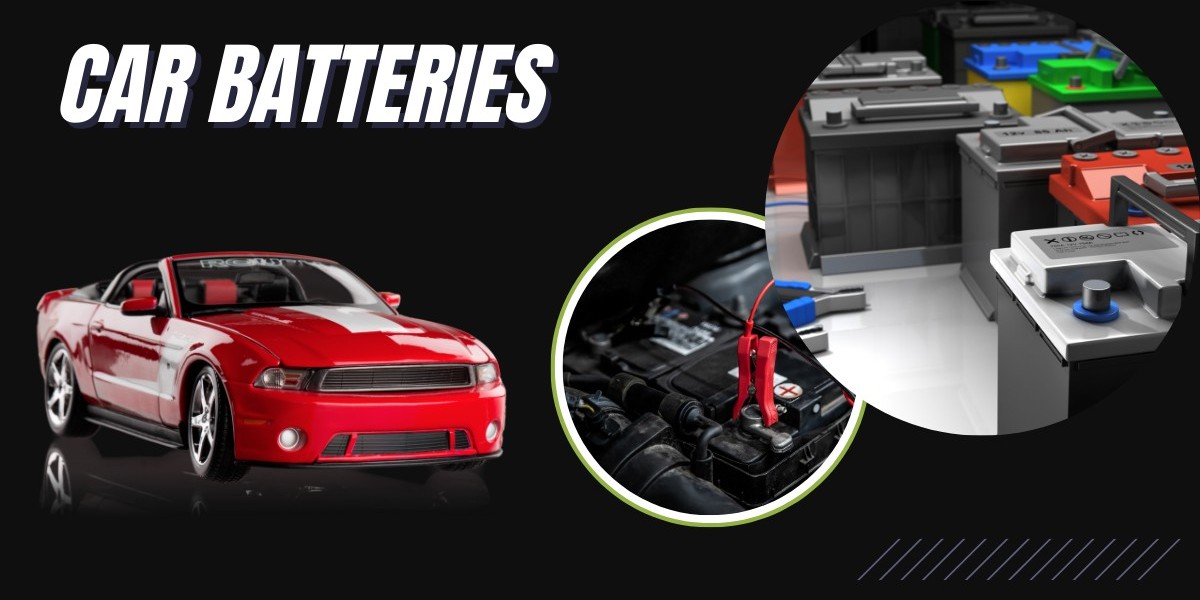Car batteries play an essential role in modern vehicles, ensuring the engine has the power to start up smoothly. You could be stranded at the most inconvenient moments without a reliable battery. In addition, as automotive technology advances, the demands on batteries increase, making it vital to understand the various aspects of car batteries and how to keep them in top shape.
Why Car Batteries Are Crucial for Every Vehicle
Simply put, a car battery provides the initial energy required to start a vehicle's engine. Beyond this primary role, car batteries also power the lights, entertainment systems, and other electrical components when the engine is off. Since nearly every modern feature relies on battery power to some extent, a healthy, fully charged car battery is necessary for a dependable ride.
Car Batteries Explained: Types and Functions
While all car batteries serve the same essential function—powering your vehicle—they come in various types. Understanding the different types can help you choose the right one, extending battery life and ensuring the best performance.
- Lead-Acid Batteries: The oldest and most common type, known for reliability and affordability.
- AGM (Absorbent Glass Mat) Batteries: Durable and maintenance-free, making them ideal for vehicles with high power demands.
- Gel Cell Batteries: Known for their spill-proof design, they are suitable for off-road vehicles.
- Lithium-Ion Batteries: Lightweight and efficient, primarily used in electric and hybrid cars.
Critical Components of a Car Battery
A standard lead-acid car battery comprises six cells, each producing about 2 volts of power for 12 volts. These cells contain lead plates immersed in sulfuric acid, which reacts to produce electricity. The key components include:
- Positive and Negative Plates: Conduct electricity and store charge.
- Electrolyte Solution: Typically, sulfuric acid creates a chemical reaction to generate power.
- Terminals: Provide connection points to the car's electrical system.
Understanding Lead-Acid Batteries
Lead-acid batteries are cost-effective and robust, making them a favorite for many car owners. They are available in two forms: flooded and sealed. Flooded batteries require occasional maintenance (adding distilled water), while sealed options are maintenance-free but can be slightly more expensive.
Exploring AGM and Gel Cell Batteries
AGM and gel cell batteries, both maintenance-free options, are designed for vehicles with higher power needs. AGM batteries use absorbent glass mats that absorb the electrolyte, offering higher efficiency and resistance to vibration. Meanwhile, gel cell batteries use a thick gel electrolyte, preventing spillage and making them highly durable for rough terrain.
Lithium-Ion Batteries in Modern Vehicles
Lithium-ion batteries are lightweight and efficient, commonly found in electric and hybrid vehicles. Unlike traditional batteries, they offer higher energy density, but they are also more costly. These batteries require specific maintenance and handling to ensure a long life, but they have been pivotal in advancing eco-friendly cars.
Factors Affecting Car Battery Performance
Many factors influence how well a car batteries performs over time. Among the most common are:
- Temperature: High heat accelerates chemical reactions, which can deplete battery life.
- Usage Patterns: Frequent short trips prevent the battery from fully recharging, leading to premature failure.
- Electrical Load: Running multiple electronic systems without adequate charging time drains the battery.
- Age: The average car battery lasts about 3 to 5 years, depending on usage and conditions.
Temperature Effects on Car Batteries
Temperature can dramatically impact a battery's lifespan. Batteries often last less than three years in hot climates due to accelerated chemical reactions. On the other hand, cold weather reduces the battery's ability to deliver power, sometimes by as much as 20%.
Common Signs Your Car Battery Needs Replacement
Recognizing the signs of a weakening battery can save you from being stranded. Look for these common indicators:
- Slow Engine Crank: It takes longer than usual to start.
- Dim Headlights: Lights may appear dull or fade when idling.
- Dashboard Warning Light: Often shaped like a battery, this light signals charging issues.
- Swollen Battery Case: Extreme temperatures can cause the battery case to swell.
Car Battery Maintenance: Tips and Best Practices
Maintaining a car battery doesn't have to be complicated. A few simple steps can keep it in top condition:
- Clean the Terminals: Remove any corrosion to improve electrical flow.
- Secure the Battery: Ensure it's fastened to avoid vibrations, which can shorten its life.
- Regular Testing: Check your battery at least twice yearly, especially before winter and summer.
How to Check Car Battery Health
Battery health checks can quickly be done with a multimeter, which measures voltage. A healthy, fully-charged car battery should read around 12.6 volts. Anything below 12 volts typically indicates that the battery needs charging or replacement.
Top Mistakes That Shorten Battery Life
- Leaving Electronics On: Interior lights, headlights, or chargers left on when the engine is off drain the battery.
- Short, Frequent Trips: Constant short drives prevent the alternator from fully charging the battery.
- Not Driving for Long Periods: Batteries slowly discharge over time, even when unused.
How Long Does a Car Battery Last?
Most car batteries last 3 to 5 years, though environmental factors and driving habits can affect this range. Batteries tend to have shorter lifespans in hot climates, sometimes lasting only two years.
Recharging vs. Replacing: When to Decide
Replacement is often the best option if a battery fails to hold a charge after multiple recharges. Continuously recharging a battery that struggles to maintain voltage can harm other electrical components in your vehicle.
How to Jump-Start a Car Battery
Knowing how to jump-start a car is essential for emergencies:
- Turn Off Both Cars: Position both vehicles with engines off.
- Attach Cables Properly: Red to the dead battery's positive terminal, then the live one's positive terminal. Black to the live battery's negative terminal and the other end on an unpainted metal surface of the dead car.
- Start the Donor Car: Let it run for a few minutes, then start the dead car.
- Remove Cables in Reverse Order: Carefully remove the jumper cables in reverse.
Safety Precautions When Handling Car Batteries
Car batteries contain chemicals that can be harmful if mishandled. Always wear gloves and safety glasses when working with a car battery, and avoid direct contact with the electrolyte solution.
Environmental Impact of Car Batteries
Improper disposal of car batteries poses environmental hazards. Batteries contain lead and sulfuric acid, which can pollute soil and water if disposed of incorrectly.
Recycling and Disposal of Old Car Batteries
Thankfully, recycling programs exist to help manage old car batteries. Over 95% of lead-acid batteries are recycled in the U.S., one of the highest recycling rates for any consumer product.
Top Brands for Quality Car Batteries
- Optima Batteries: Known for durability and high performance.
- DieHard: Offers a long-lasting charge and reliable starting power.
- Odyssey: Designed for high power output and longer shelf life.
Cost Considerations for a New Car Battery
Car battery costs vary widely based on the type, brand, and power capacity, ranging from $50 to over $200. Factors such as warranty, cold-cranking amps (CCA), and reserve capacity also affect pricing.
Installing a New Car Battery Step-by-Step
Replacing a car battery is straightforward:
- Turn Off the Vehicle: Ensure all electronics are off.
- Disconnect Terminals: Start with the negative, then the positive.
- Remove the Old Battery: Carefully lift it out.
- Place the New Battery: Align it and secure it properly.
- Reconnect Terminals: Positive first, then negative.
Car Batteries and Winter Care
Winter can be particularly challenging for car batteries. Consider a battery warmer for frigid climates and park indoors whenever possible to prevent freezing temperatures from draining battery power.
Car Batteries for Electric and Hybrid Vehicles
Electric and hybrid cars use lithium-ion batteries rather than traditional lead-acid. These require minimal maintenance, but replacement can be costly, sometimes costing thousands of dollars. However, they last significantly longer, often exceeding 8 to 10 years.
Frequently Asked Questions about Car Batteries
What type of car battery is best?
Lead-acid batteries work well for most, but AGM batteries suit cars with extra power needs, while lithium-ion batteries are ideal for electric vehicles.
How often should a car battery be replaced?
Typically, every 3-5 years, depending on driving conditions and climate.
Is it safe to jump-start any car battery?
Yes, but follow all safety precautions to avoid shocks and other hazards.
Can a weak car battery damage other car parts?
Yes, a failing battery strains the alternator, potentially leading to its premature failure.
What's the most environmentally friendly way to dispose of a car battery?
Recycling is highly recommended. Many service centers and retailers accept old batteries.
Conclusion
Understanding car batteries is critical to maintaining a vehicle's reliability and efficiency. Staying informed can make all the difference, from choosing the correct battery to recognizing signs of wear and tear. Make battery maintenance a routine part of vehicle care, and enjoy a worry-free driving experience.







